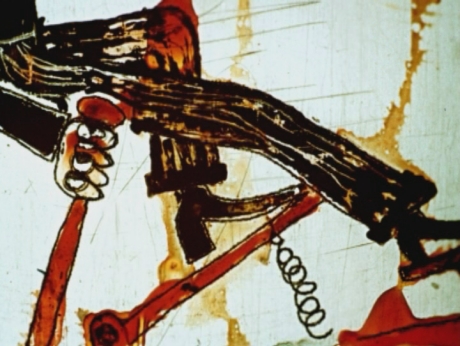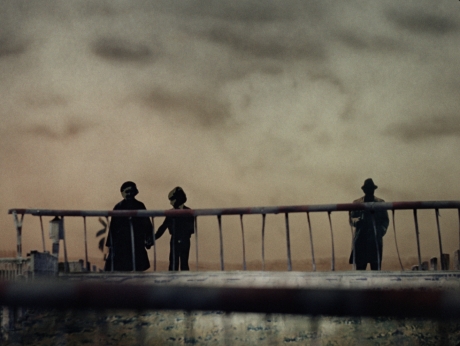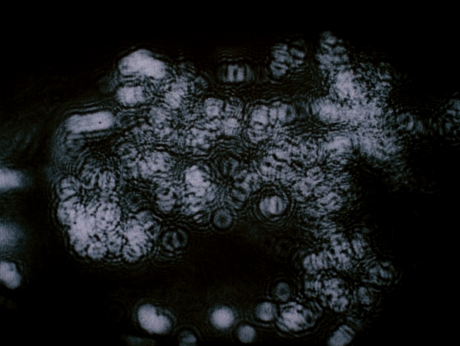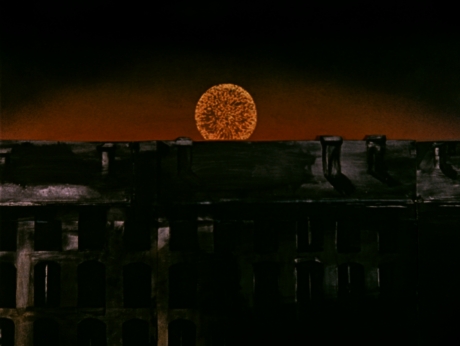
 overview
overview
About the film
Assistant Director: Marek Pieniążek
Music: Marek Wilczyński
Sound Imitation: Mieczysław Janik
Editor: Krystyna Makarewicz
Production Manager: Halina Kramarz
Production: Animated Film Studio (Cracow)
Rights: National Film Archive
Language: pl
hide tab

 storyline
storyline
A horse tiresomely pulling a wagon – in a slow, regular rhythm. People relaxing by the water, snoozing, eating, drinking, talking, playing ball… And nature – beautiful, dignified, sometimes cruel. Humans are just as cruel towards nature. The camera moves around its own axis – in a circle, observing the recreation from afar, through bushes and trees. The popular musical motive is mixed with natural sounds (murmurs). The atmosphere becomes tight. The coachman hurries the horse…
hide tab

 comment
comment
hide tab

 by author
by author
hide tab



















“The Return” (1972), Jerzy Kucia’s debut, was a “horizontal” journey, an intimate impression about a man who returns for a moment to the world of his past, “The Lift” (1973) – a “vertical” journey, a collage of thoughts, memories, dreams of a man who is in a lift, and “The Circle”, a circular journey. The camera moves around its vertical axis, returning to the same scenes in which small changes have appeared, often in the far background. The construction assumption – incredibly simple, the realisation – extremely difficult. In Jerzy Kapuściński’s program “Other Cinema” the artist, when commenting the TV projection of “The Circle”, says: “For me the technique was not very important, that is it doesn’t matter what technique I use as long as it shows the situation I want to present. I even wanted the audience not to recognize the technique, but to go as deep as possible into the story, the drama, to understand this language which is – in my opinion – not so simple.” “The Circle” is a kind of continuation of Kucia’s earlier films and a notice of his future films. The director confirms this observation. In a conversation with Monika Wysogląd in “Film” (nr 31/1986) he confesses: “Sometimes I think that maybe I am lowering the level, because I have plunged into a creative tunnel (…) constantly the same one. I have however done this on purpose. It is very easy to make diverse films, much harder to make those which come from a common genesis. I have many ready scripts, but I only want to realise some of them – those, which have a connection with my earlier films, which descend from them. For example “Reflexes” came from “The Circle.” When I was making “The Circle”, I already knew that I would also make “Reflexes”, moreover I knew that they would resemble each other, because they would stem out of a motif from “The Circle.” The opposition between nature and civilization is successfully continued by Kucia in his later films: “The Parade” (1986; prizes in Oberhausen, Warna, Kraków, Zamość), in which harvest time brings back memories and reflections, as well as “Through the fields” (1992; prizes in Szanghaj, Huesca, Kijów, and Kraków), a poetic impression about the passing of time, where a trip through the fields is accompanied by images from the past, of close people, dreams. The logic of the precedence of events in these films is substituted by a logic of memory. Jerzy Armata